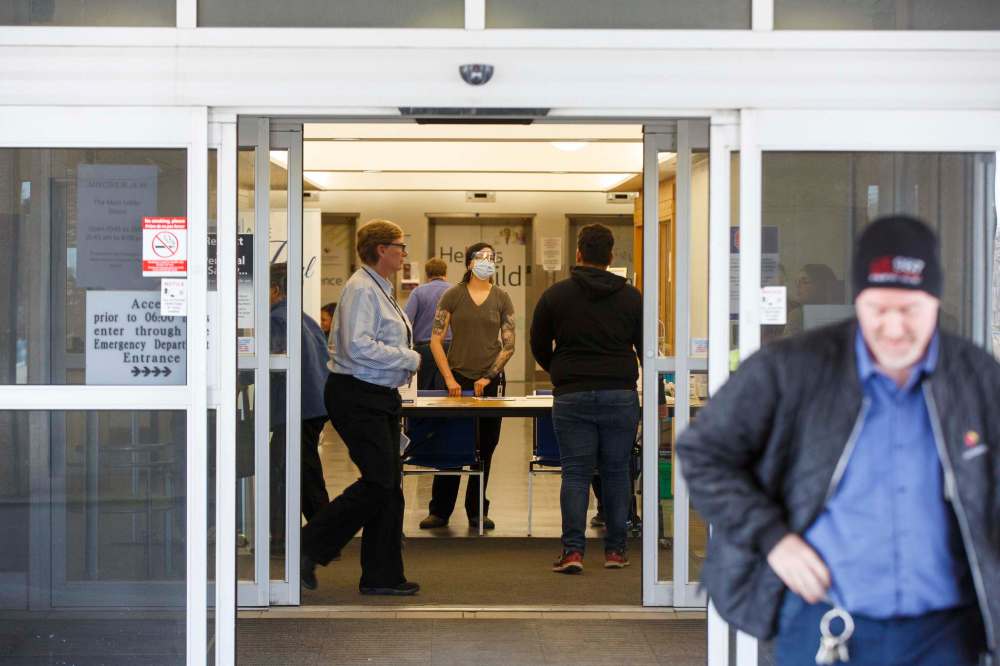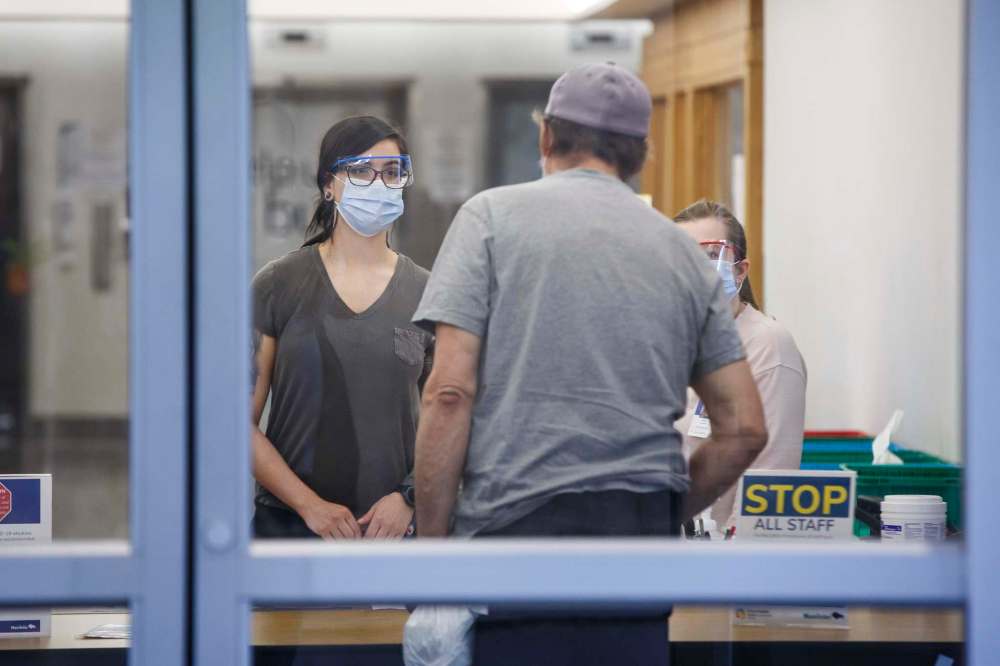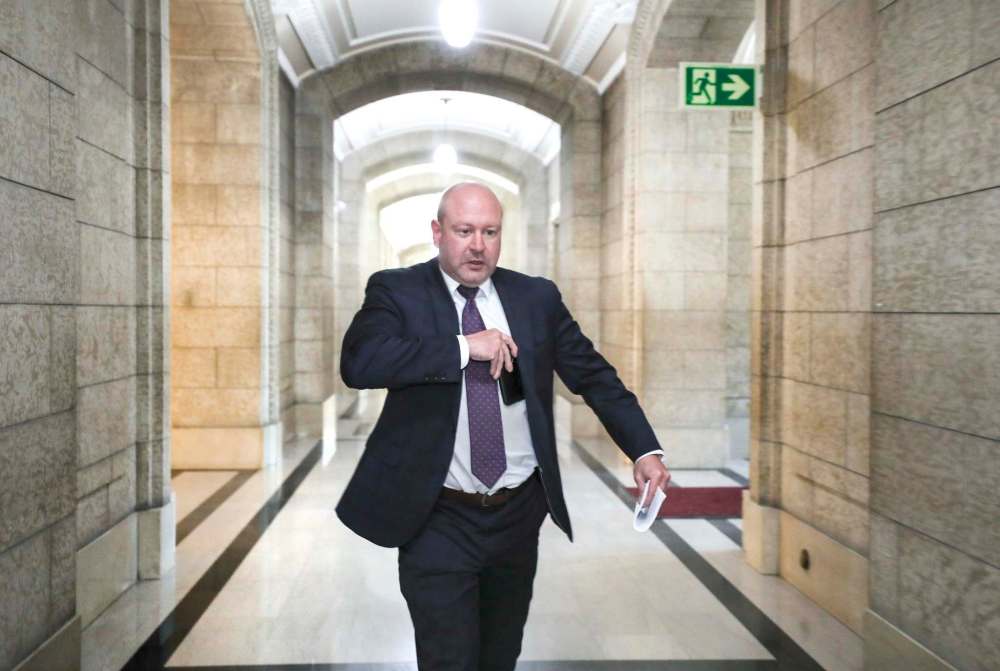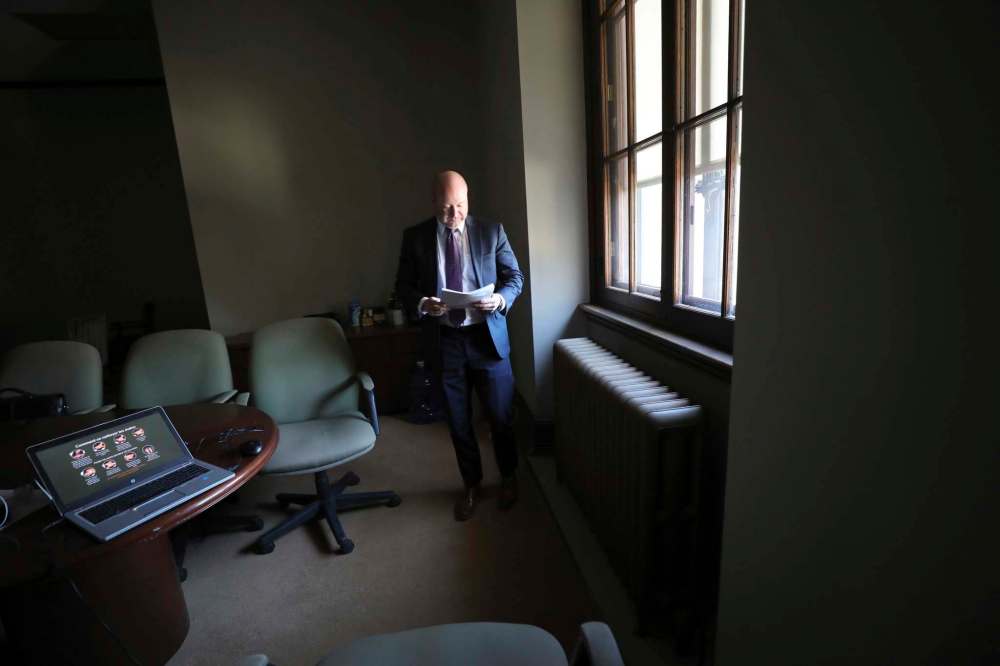2 p.m.
On health care's front line
Advertisement
Read this article for free:
or
Already have an account? Log in here »
To continue reading, please subscribe:
Monthly Digital Subscription
$0 for the first 4 weeks*
- Enjoy unlimited reading on winnipegfreepress.com
- Read the E-Edition, our digital replica newspaper
- Access News Break, our award-winning app
- Play interactive puzzles
*No charge for 4 weeks then price increases to the regular rate of $19.00 plus GST every four weeks. Offer available to new and qualified returning subscribers only. Cancel any time.
Monthly Digital Subscription
$4.75/week*
- Enjoy unlimited reading on winnipegfreepress.com
- Read the E-Edition, our digital replica newspaper
- Access News Break, our award-winning app
- Play interactive puzzles
*Billed as $19 plus GST every four weeks. Cancel any time.
To continue reading, please subscribe:
Add Free Press access to your Brandon Sun subscription for only an additional
$1 for the first 4 weeks*
*Your next subscription payment will increase by $1.00 and you will be charged $16.99 plus GST for four weeks. After four weeks, your payment will increase to $23.99 plus GST every four weeks.
Read unlimited articles for free today:
or
Already have an account? Log in here »
Hey there, time traveller!
This article was published 07/05/2020 (2054 days ago), so information in it may no longer be current.
Clad in sneakers and scrubs, a health-care worker heading to his afternoon shift at Grace Hospital moves with a quick clip through the sliding double doors that lead to the atrium.
His stride, however, is interrupted at a “hard stop” just past the main entrance.
A handful of signs, hand-sanitizer dispensers and a pair of two-metre-long tables pushed together lengthwise form the checkpoint. Two gatekeepers who wear procedure masks and eye shields receive him.
Before he can head to work, he must successfully answer a series of questions. Does he have a fever or chills? A cough? Shortness of breath or headache? How about a sore throat or sore muscles?
The oral exam is done, and the worker moves on to the next phase. He greets a colleague — draped in a medical gown and armed with a yellow infrared thermometer — with a slight bow to have his temperature taken. He’s in the clear, and sent on his way.

Friendly interrogation is routine at Grace, where everyone who enters the hospital campus is screened for the novel coronavirus.
“We have a highly professional, highly responsible staff and we don’t encounter issues,” says Jon Einarson, the hospital’s director of community relations and screening supervisor. “We’re all on the same song sheet on how important these measures are for all of our safety.”
About 2,000 people work at the Grace and three checkpoints — known as hard stops — process between 700 and 800 hospital staff, and hundreds more home care professionals, each day.
“As an acute-care hospital treating COVID, if staff come in and get infected by somebody who has COVID… the contact tracing with that can get scary,” Einarson says. “When you’re an acute-care hospital, you have to kick it up a notch in terms of your protocols.”

Screening in the late afternoon is a bit slower, Einarson says as the midday sun bounces off windows adorned with words of encouragement. Most hospital staff show up for work before 8 a.m., at noon and again at 7:30 p.m.
At those times, the physically distanced line of employees waiting to be screened can stretch down the entrance corridor. Staff don’t wait long — three to five minutes — before getting on with their day, he says.
“From a staff perspective, it’s like waiting in line at the Red River Ex,” Einarson says. “It’s a very collegial thing because we’re all colleagues here and we’re all united in this fight.”
— Danielle Da Silva
●●●
About 45 minutes after finishing his daily health briefing in Room 68 at the Manitoba legislature, Manitoba’s chief public health officer squeezes in a quick phone call with a reporter.
“No one takes this job and expects a worldwide pandemic six months later, but doing it is a privilege,” Dr. Brent Roussin says.

At the 1 p.m. news conference, Roussin announced two new Manitoba cases of COVID-19, at a workplace in the western part of the province. Five cases had been reported at the location earlier.
He also updated the provincewide count of cases to 284 (35 active, 242 recovered) with seven deaths. He then answered questions about schools reopening and potential new outbreaks as a result of restaurant patios opening.
“I try to have a balance when making these announcements,” Roussin explains. “I give statistics and inform but really want to show that these are lives we are talking about.”
“I give statistics and inform but really want to show that these are lives we are talking about.”
He’s constantly on the run and has 10 minutes until his next meeting, this one with health officials planning a town hall on future provincial plans to deal with the pandemic.
This is what it takes to fight a pandemic: a day that starts at 7 a.m. with the first of many incident-command meetings.
Roussin also finds time to brief ministers, has conferences with health colleagues from across the province and constantly meets with his team — which he says is, now, “like family.”
Any free moments are spent answering emails, calls and texts from his wife and teenage kids. By the time he gets home it’s after 7 p.m., but his family waits to eat with him.
“Dinner is often our only time together,” he says. “I look forward to it.”
For many people, Roussin has become the face of Manitoba’s fight against COVID-19 but he’s adamant about “a list of people a mile long fighting this sickness with me. I credit them, and especially Lanette (Siragusa, chief nursing officer for Shared Health).”
Siragusa accompanies Roussin at the daily news briefings, always sitting to his right, always more than two metres away.

During the past six weeks — Manitoba’s first COVID case was recorded on March 12 — Roussin has only taken two days off. Time’s not something he thinks much about, though; he’s fighting for his home province.
He grew up in the Maples and earned his medical and law degrees and master’s in public health at the University of Manitoba. Most of his training took place in Manitoba’s north, when he was a medical officer.
Before the pandemic hit, he worked in a medical clinic on the weekends.
“That’s what I miss: helping patients,” he says. “I can’t wait to get back to doing that.”
— Niigaan Sinclair


